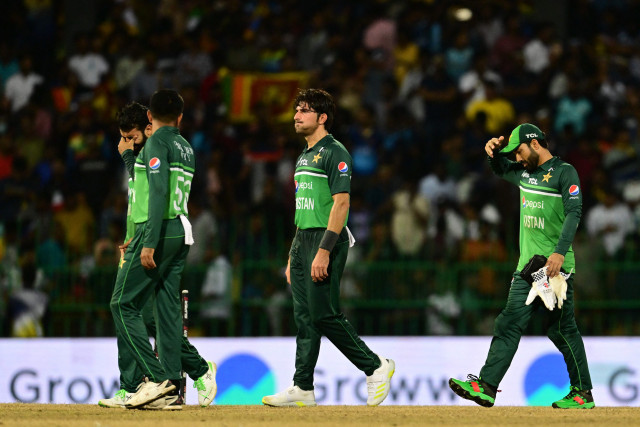Cricket's decline: The impact of losing institutions
Decline in cricket performance highlights the urgent need to revive Pakistan’s cricketing infrastructure.

Pakistan's recent performance against Bangladesh has been dismal, marking one of the team's lowest ebbs in the past 70 years.
If we do not act fast, we may face a fate akin to hockey's: despite past triumphs in four World Cups and three Olympic medals, the sport now struggles to qualify for major tournaments.
This decline in cricket performance has not been sudden but has worsened since the removal of departmental and institutional cricket.
Although occasional successes in T20s and ODIs offer temporary relief, they fail to address the fundamental issue impacting Test cricket—the traditional and crucial format of the game.
The root of the problem lies in the need to relaunch our domestic cricket system. Departments once served as vital incubators, generating a broad talent pool that ensured strong bench depth and bolstered national team performance.
The cessation of departmental cricket has led to a weakened system, where current players face minimal competition and may become complacent.
The collapse began with the end of departmental cricket, which not only provided employment for players but also acted as a crucial breeding ground for emerging talent.
Today, countries like India and England have established rigorous systems for nurturing local talent, maintaining large pools of 300-500 players through transparent and structured processes.
Our cricket already suffered bigtime, when we witnessed the demise of institutional cricket earlier, which was once a significant source of budding talent.
Pakistan’s once-competitive institutional system—encompassing institutions such as Government College Lahore, Civil Lines College, Islamia College, and Aitchison College—has diminished in recent times. Historically, many legendary cricketers began their journeys in these settings before rising to international prominence.
For instance:
- Virat Kohli (Saviour Convent)
- Kumar Sangakkara (Trinity College)
- Ravichandran Ashwin (Nadar College of Engineering)
- AB de Villiers (University of the Free State)
- Hashim Amla (University of Cape Town)
- Inzamam-ul-Haq (GC Lahore)
- Rahul Dravid (St. Joseph’s Boys’ High School)
- Brian Lara (Fatima College)
- Sachin Tendulkar (Vidyamandir School)
- Saeed Anwar (NED University)
- Sunil Gavaskar (St. Xavier's High School)
- Sir Vivian Richards (Antigua Technical College)
- Malcolm Marshall (University of the West Indies)
- Jonty Rhodes (University of Natal)
- Imran Khan (Aitchison College, Pakistan Railways)
- Wasim Akram (Civil Lines and Pakistan Telecommunications)
- Kapil Dev (Haryana Police)
These players were initially spotted at the school level before advancing to their respective departments.
In contrast, Pakistan’s institutional cricket system has lost its effectiveness, leading to a significant gap in talent development.
To remedy this crisis, Pakistan must rebuild a robust system for developing talent. This should start with revitalizing school, college, and club cricket, before progressing through departmental cricket to the national stage.
The current lack of a structured pathway contributes to the widening gap between Pakistan and other leading cricketing nations.
Reinstating departmental cricket and encouraging players to engage in full seasons of Test cricket are essential steps.
By establishing a talent pool of over 300 players based on performance, even established players like Babar Azam would face demanding competition for their positions.
Schools, colleges, and departmental teams are crucial for nurturing cricketing talent. Overlooking these grassroots elements undermines the development of a world-class team.
While short-term fixes may offer temporary success, they cannot secure long-term excellence, especially in the enduring format of Test cricket.



















COMMENTS
Comments are moderated and generally will be posted if they are on-topic and not abusive.
For more information, please see our Comments FAQ